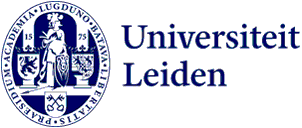
With 30 million dollars, this consortium aims to tackle tuberculosis
Thanks to a clever research method, progress is being made in the quest for better tuberculosis medications. Within an American consortium that received a 30 million dollars grant, Leiden researcher Rob van Wijk plays a significant role. ‘The next breakthrough in tuberculosis research will come much faster than the previous one.’
For decades, tuberculosis therapy remained the same: patients had to take a combination of four antibiotics for six months or longer. Adherence to this treatment is challenging, partly because tuberculosis is more prevalent in low- and middle-income countries. When patients miss part of their treatment, it can lead to resistant bacterial strains, which is a major problem. Globally, around ten million people contract tuberculosis each year, with approximately one and a half million dying from the disease.
Reducing treatment duration from six to four months
In 2021, an international research team succeeded in proving that a specific combination of antibiotics can swiftly eradicate the bacterium in four months. A former colleague of Leiden pharmacologist Rob van Wijk, Prof. Rada Savic from the University of California, San Francisco, was involved in this breakthrough. Van Wijk worked with her at this university until November. Now he is part of the consortium that Savic leads, called Preclinical Design and Clinical Translation of TB Regimens (PReDicTR), which was awarded 30.8 million dollars by the US National Institutes of Health (NIH) in early April.

A research cycle with three components
The research in the consortium is based on a cycle consisting of three parts, with Van Wijk leading one of them. The cycle starts with in vitro laboratory research to determine whether a substance can eliminate the tuberculosis mycobacterium. If this in vitro research shows promising results, the second step involves in vivo studies on infected animals. The third step, data science and modeling, is led by Van Wijk. ‘We integrate all data from the experiments to make predictions: which medications can cure as many patients as possible as quickly as possible?’
The treatment always involves a combination of antibiotics. ‘Tuberculosis is a heterogeneous disease that affects different parts of the body. That's why you need a combination of medications.’ Van Wijk and his team of modelers use algorithms trained with existing data from previous research. ‘These models increasingly understand how to translate results from cells or animals into results in humans. Based on new findings, they predict which combination at which dosage will yield optimal results in humans and how fast. This accelerates in vitro and in vivo researchers arriving at an optimal combination, which can then be tested in patients.’ The latter occurs outside the consortium.
Special focus on medication for children
Van Wijk essentially translates numerous lab results into predictions. His field is called translational immuno-pharmacology. ‘We also specifically examine the treatment of children, who often receive the same treatment as adults. However, children are not just small adults; the course of the disease is different. Additionally, their processes of drug absorption and elimination are still developing, so a certain dosage of medication can have very different effects.’ Van Wijk's predictive models and those of his colleagues can take this into account.
Moving towards a three- or two-month treatment duration
According to Van Wijk, the new treatment from 2021, lasting four months instead of six, is slowly being integrated into the global tuberculosis treatment. ‘This discovery has been decades in the making. Ultimately, it came about through a research cycle similar to the one we're using now.’ The goal now is to reduce the duration from four months to three or even two. ‘Hopefully, this breakthrough will come much faster than the previous one.’
Passionate researchers, focused on collaboration
The scale of tuberculosis research cannot be compared to that of cancer or diabetes research, says Van Wijk. ‘In The Netherlands, it's almost a forgotten disease.’ However, tuberculosis researchersare highly driven and focused on collaboration, Van Wijk notes. ‘I believe that people who are less fortunate in where they were born are also entitled to a healthy life. That's why I think it's important to work on this disease.’
In Leiden, researchers from four institutes work on TB. They form the Leiden Interdisciplinary Tuberculosis Consortium (LiTBC) and meet monthly.
Text: Rianne Lindhout
Image above article: pixabay/Shafin_Protic
